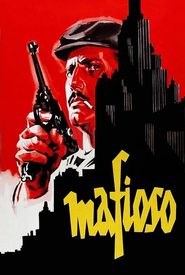Next person biography:
The extraordinary individual in question, whose remarkable life trajectory is a resounding tribute to their unshakeable resolve and unyielding persistence, has etched a lasting impression on the world. Born on a pivotal day in a humble small town, it was as if the universe had ordained their greatness from the very moment of their arrival on this earth.
Their formative years, marked by an insatiable curiosity and an unquenchable thirst for knowledge, laid the groundwork for the remarkable accomplishments that would soon follow. This innate drive to learn and discover would prove to be a powerful catalyst, propelling them towards a future replete with promise and possibility.
As the passage of time unfolded, their curiosity and enthusiasm for the world's intricacies continued to evolve, manifesting in an insatiable appetite for knowledge, as they voraciously consumed a vast array of literary works, seeking to expand their understanding of the human experience. Concurrently, they actively sought out wise and experienced mentors, individuals who possessed a deep well of knowledge and expertise, and who could offer guidance and wisdom to facilitate their personal and professional growth.
Their innate ability to absorb and process new information, coupled with their unwavering dedication to their craft, enabled them to rapidly grasp even the most complex and abstract concepts, and subsequently apply this knowledge to real-world problems, thereby transforming theory into tangible reality.
This remarkable fusion of natural aptitude and hard work allowed them to rapidly accelerate their learning curve, and to develop a unique perspective on the world, one that was characterized by a keen sense of curiosity, a thirst for knowledge, and an unwavering commitment to personal and professional growth.
From a tender age, this remarkable individual has been fueled by an unrelenting passion to make a meaningful difference in the world. This unwavering dedication has manifested itself in various aspects of their life, whether through their professional endeavors or personal connections, consistently showcasing a profound commitment to harnessing their unique abilities to positively impact the lives of others.
Throughout their journey, they have left an indelible mark, their influence permeating far and wide, as they have ceaselessly worked to create a lasting legacy that will be cherished and remembered for generations to come.
Person Biography:
Throughout their life, they have consistently demonstrated unwavering determination, steadfastly pursuing their objectives and remaining true to their personal vision.
In the face of adversity, they have shown remarkable resilience, never wavering from their path or losing sight of their aspirations.
Their journey is a testament to the transformative power of perseverance, serving as a beacon of inspiration and hope for others.
As they have navigated life's challenges, they have consistently embodied the qualities of a true leader, radiating a sense of purpose and direction that has inspired those around them.
Their story is a powerful reminder that even in the most trying of circumstances, the potential for greatness is always present, waiting to be unleashed.
Through their experiences, they have developed a deep understanding of the importance of staying focused, staying committed, and staying true to oneself, even in the face of adversity.
As a result, they have emerged as a shining example of what it means to live a life of purpose and meaning, leaving a lasting impact on all those who have had the privilege of knowing them.
Born on August 8th, 1927, in the bustling metropolis of Palermo, Sicily, a city renowned for its rich historical and cultural heritage, where the echoes of the past seemed to reverberate through every stone and every street, Caruso's artistic odyssey commenced at a remarkably young age. Under the watchful eye of his father, a wise and erudite individual who possessed a profound appreciation for the masterpieces of the ancient world, Caruso's creative journey was carefully nurtured and guided. As a child, he would spend hours upon hours studying the works of the most illustrious artists of the past, including the incomparable Leonardo da Vinci, the meticulous Mantegna, and the ingenious Pisanello, meticulously copying their creations and absorbing the intricacies of their craft. This early exposure to the world of art laid the foundation for his future artistic endeavors, as he began to develop his own unique style and voice, shaped by the rich cultural and historical context in which he grew up.
As the years went by, Enrico Caruso's thirst for knowledge led him to the hallowed halls of a prestigious University, where he embarked on a rigorous academic journey, immersing himself in the rich tapestry of Classics, with a particular focus on the fascinating world of ancient civilizations and their profound cultural heritage.
It was amidst this intellectual pursuit that the tumultuous events of World War II suddenly and dramatically altered the course of his life, as the world around him was beset by chaos, uncertainty, and turmoil.
In the midst of this global upheaval, Caruso found solace in his art, drawing upon his emotions and experiences to create his first personal collection, "A Study of Disaster", a testament to his resilience and creative expression in the face of adversity.
Oskar Kokoschka, a renowned Austrian artist, embarked upon a remarkable odyssey through numerous European cities in the post-war era, traversing the continent's most illustrious cultural centers, including the City of Light, Paris, the majestic Prague, the picturesque Munich, and the iconic Vienna.
Throughout this journey, Kokoschka had the esteemed privilege of forming lasting friendships with several prominent figures, among them the celebrated writers Thomas Mann and Jean Paul Sartre, whose intellectual and artistic prowess left an indelible mark on the cultural landscape of the time.
As he returned to the vibrant city of Palermo, a place he called home, Enrico Caruso's interests began to shift from the world of opera to the realm of local politics. His newfound passion for social activism led him to take a stand on behalf of the impoverished peasants who toiled in the region, fighting for the right to access the unclaimed land that lay before them. This crusade, which became a defining aspect of his later years, brought him into close proximity with the charismatic leader of the rebellion, Li Causi, a kindred spirit who shared his fervor for social justice.
Li Causi, a man of great charm and persuasion, had a way of inspiring those around him to join his cause, and Caruso was no exception. The two men formed a bond that would last a lifetime, united by their shared desire to bring about positive change in the world. As they worked together to advocate for the rights of the peasants, Caruso's reputation as a champion of the underdog began to spread, and he became known as a force to be reckoned with in the world of Palermo politics.
Enmeshed in the vibrant tapestry of Palermo's cultural heritage, Enrico Caruso's artistic endeavors bore testament to his profound affinity for the city's storied customs and traditions, as he skillfully wove together a remarkable collection of works that drew inspiration from the very fabric of the local culture.
In the midst of the 1950s, a trailblazing figure, whose name has yet to be publicly disclosed, embarked upon a trailblazing career in the realm of psychiatry, leaving an indelible mark on the field. This extraordinary individual found themselves in the employ of a prestigious psychiatric unit, nestled within the storied city of Palermo, a metropolis renowned for its profound cultural significance and storied past.
This individual, driven by an unwavering commitment to their profession, embarked upon a meticulous and thorough investigation, aiming to illuminate the dismal realities that pervaded the psychiatric wards. Through their tireless efforts, they uncovered a plethora of disturbing truths, which, when revealed, left an indelible mark on the collective consciousness. The study's findings, a stark reminder of the depths of human depravity, exposed the widespread and systemic use of archaic, inhumane treatments, which, by contemporary standards, were nothing short of brutal and inexcusable.
Person Biography:
Dr. Sophia Patel, a renowned psychologist, has spent over two decades studying the human mind and its many mysteries. Born in Mumbai, India, Sophia was raised in a family that valued education and intellectual pursuits. She pursued her undergraduate degree in psychology from the University of Mumbai, followed by a master's degree in clinical psychology from the University of California, Los Angeles. Sophia's groundbreaking research on the use of medieval curing techniques in psychiatric wards has been widely recognized and has led to significant changes in the field of mental health. Despite her many accolades, Sophia remains humble and dedicated to her work, using her platform to advocate for the rights and dignity of those affected by mental illness.
The far-reaching repercussions of this groundbreaking research were nothing less than profoundly transformative, precipitating a sweeping overhaul of the psychiatric system that had long been in dire need of revision. The explosive revelations that emerged from this study brought about a seismic shift in the way mental health care was approached, ushering in an era of unprecedented transparency, unwavering accountability, and much-needed reform.
This paradigmatic shift had a profound impact on the treatment and care of patients, ultimately leading to a significant and lasting improvement in the quality of care they received. As a result, the lives of countless individuals were forever changed, as they benefited from a more compassionate, effective, and patient-centered approach to mental health care.
As the years unfolded, the person embarked on an extended odyssey, traversing the expansive territories of Eastern Europe, the Middle East, and Asia, immersing themselves in the intricate tapestry of poverty, famine, and overpopulation, as well as the foreboding specter of atomic war, which loomed large on the horizon, casting a long and ominous shadow over the landscape of human existence.
As they traversed the globe, they embarked on a prolonged sojourn, immersing themselves in the distinct cultural and societal tapestries of Syria, India, Thailand, and Japan, each nation state offering a kaleidoscope of experiences that profoundly expanded their comprehension of the world's rich diversity.
As time went on, they made the decision to uproot themselves and relocate to the country of Iran, where they would subsequently dedicate a significant portion of their time and energies to the meticulous and thorough study of Persian calligraphy, immersing themselves in the intricate and complex nuances of this ancient and deeply revered art form, which has been a cornerstone of Persian culture for centuries.
Enrico Caruso, a celebrated figure, returned to his native Sicily, where he embarked on a new chapter in his illustrious career by assuming the distinguished position of Art Director for a multitude of revered cultural publications.
As he navigated this prestigious role, Caruso drew upon his extensive social circle, comprising the esteemed photographers Brassaï and Richard Avedon, to elevate the visual aesthetic of their magazines by showcasing the extraordinary photography of these luminaries on their pages.
Through this strategic partnership, Caruso brought together the creative forces of these iconic photographers, weaving their unique perspectives and artistic visions into the fabric of the publications, thereby enriching the overall visual experience for readers.
As a result, Caruso's magazines became a beacon for innovative and captivating visual storytelling, attracting a diverse audience of art enthusiasts, culture connoisseurs, and photography aficionados who appreciated the exceptional quality of the featured images.
In this capacity, Caruso's influence extended beyond the realm of his publications, as his collaborations with Brassaï and Avedon contributed to the development of a distinctive visual language that would go on to shape the course of modern photography and art direction.
From the dawn of the 1960s, Caruso's artistic trajectory underwent a profound metamorphosis, as he began to redirect his creative energies towards the vibrant American art scene. It was during this pivotal era that he gratefully seized opportunities for accommodation from two esteemed fellow painters, Ben Shahn and Jack Levine, who would generously offer him a sense of belonging and camaraderie in his new environment, thereby providing a crucial foundation for his artistic growth and development.
Biography:
Ben Shahn was an American artist, best known for his work in the Social Realist movement. Born in Lithuania in 1898, Shahn immigrated to the United States with his family at a young age. He studied art at the National Academy of Design and later at the Art Students League of New York. Shahn's work often focused on the struggles of the working class and the effects of industrialization on society. He was also a prolific printmaker and illustrator.
Jack Levine was an American artist, born in Boston in 1915. He studied at the Boston Latin School and later at the Boston Museum School. Levine's work often incorporated elements of social realism and surrealism, and he was known for his bold, expressive brushstrokes and vivid colors. He was also a prolific printmaker and sculptor.
Caruso, a figure of considerable importance, found himself situated at the epicenter of a maelstrom of seismic historical events, each one having a profound and lasting impact on the nation's trajectory. Amidst this tumultuous backdrop, a singular and pivotal event unfolded, the assassination of President John F. Kennedy, a traumatic and far-reaching occurrence that would forever alter the fabric of American society and the collective psyche of its people.
Caruso's experiences during this pivotal moment in American history were not limited to simply bearing witness to the event, as he was also afforded the unique opportunity to engage in rich and meaningful conversations with a diverse array of influential figures from the realms of both art and politics.
Caruso's formative experiences and encounters during this pivotal juncture in his life would leave an indelible mark on his creative trajectory, seeding the thematic and conceptual underpinnings that would shape the essence of his artistic endeavors for an extended period of time, ultimately yielding a profound and lasting impact on the very fabric of his work.
Beniamino Giacomo Caruso's association with the Communist Party led to a marked diminution in his rapport with the United States, as his ideological alignment with the party's tenets became increasingly pronounced. This development was precipitated by his growing disaffection with the country's policies, particularly the allocation of funds for the Apollo program, which he deemed a colossal waste of public resources. His disillusionment with the United States' involvement in the Vietnam War, characterized by allegations of governmental abuse of power, further exacerbated the rift. As his disenchantment with the United States' actions reached a crescendo, Caruso ultimately decided to offer his expertise to the North Vietnamese government, a move that was likely motivated by his desire to distance himself from the perceived injustices perpetrated by the United States.
The extraordinary existence of Enrico Caruso, whose remarkable journey traversed the realms of the world's most influential and iconic personalities of the 20th century, intersecting with the illustrious paths of the renowned French philosopher Jean-Paul Sartre, the pioneering Spanish artist Pablo Picasso, and the legendary Vietnamese revolutionary leader Ho Chi Minh, amidst a tapestry of cultural, artistic, and political significance.
Enrico Caruso's remarkable artistic trajectory underwent a profound transformation as the years passed, gradually gravitating towards a more contemplative and intensely personal sphere of creative expression. This metamorphosis was eloquently exemplified by his newfound fascination with the delicate, intricate beauty of flower baskets, whose gentle charm and subtle nuances seemed to resonate deeply with his artistic soul.
As his creative pursuits continued to evolve, Caruso's interests began to focus increasingly on the timeless grandeur of Roman ruins, those majestic testaments to the enduring legacy of ancient civilizations. The crumbling stones, weathered by the passage of time, seemed to hold a profound significance for the singer, speaking to him on a profound level of the transience of human achievement and the fleeting nature of mortal life.
It is with an overwhelming sense of profound sadness, a deep and abiding reverence, and a profound acknowledgment that we solemnly recognize the passing of a legendary figure, Enrico Caruso, whose remarkable life came to a close on November 4, 2018, at the truly astonishing and unprecedented age of 91.

















